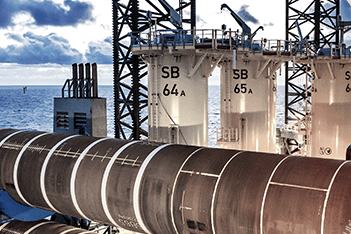According to Benchmarking New Jersey on Offshore Wind, a recently released study by the Sweeney Center for Public Policy at Rowan University, New Jersey remains in the forefront of U.S. offshore wind development, with ambitious energy production goals and major investments in supply chain and port infrastructure. However, the future of its first-in-the nation monopile manufacturing facility is murky.
“[The] report takes a hard look at where New Jersey stacks up on offshore wind,” says Steve Sweeney, who chairs the policy center. “We have moved aggressively as a state over the past five years to put ourselves in position to be the national leader in both offshore wind development and job creation.
“Competition between states and companies is increasingly intense. With New York allowing Orsted to use federal offshore wind tax credits, we need to do the same to make sure that the EEW AOS monopile manufacturing facility in Paulsboro is able to expand, increase union jobs and supply our offshore wind farms with American-made components,” Sweeney says.
The $637.7 million invested by the state Economic Development Authority (EDA) in New Jersey Wind Port is the nation’s largest port facility investment. Tim Sullivan, CEO of the EDA, warned the Assembly Budget Committee recently that New Jersey is in danger of losing its “first mover advantage” and being left behind in the competition for offshore wind jobs and economic growth.
“While Massachusetts’ Vineyard Wind 1 is under construction and will be the first commercial-scale offshore wind farm in the nation, New Jersey has been the leader in supply chain, manufacturing and port infrastructure investment,” says Mark Magyar, the Sweeney Center’s director and report’s author.
“Governor Murphy set the most ambitious offshore wind target in the nation and his administration has been particularly aggressive in requiring companies to invest in New Jersey projects as a condition of power purchase agreements,” Magyar says. “What is at risk is the future of the EEW AOS monopile plant, which was the first major private sector investment in creating a U.S.-based manufacturing industry to supply the offshore wind industry.”




